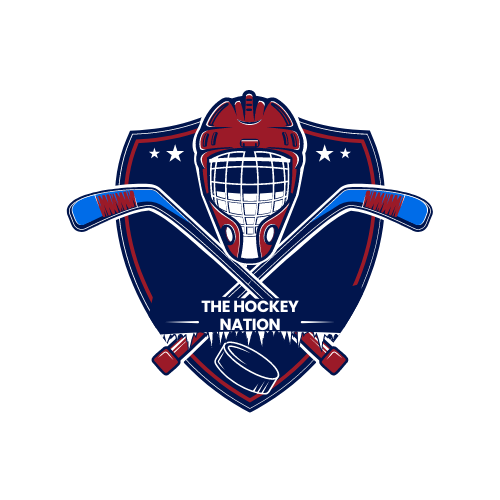A standout feature of hockey is the ability for players to shift on and off the ice while the game is still in full swing. Unlike soccer, football, baseball, and rugby, which require a stoppage for substitutions, hockey thrives on the fluidity of these changes. Players seamlessly rotate in and out, making strategic swaps part of the exciting flow of the game.
But how do hockey players know when to change lines?
It’s a fine-tuned balance of factors: the length of their shift, coordinating with linemates, strategic matchups against the opponent, and timing changes to avoid giving up scoring chances. This dynamic element keeps the game fast-paced and thrilling!
Players Change Off After About 30-45 Seconds
Ever wondered why NHL players zip on and off the ice so quickly? On average, an NHL shift lasts about 45 seconds. If you’re curious to dive deeper, I’ve got a full post on shift length.
The key takeaway here: after about 45 seconds, a player’s performance starts to nosedive if they don’t get off the ice. Hockey is a high-energy, high-stamina sport, and maintaining that intensity requires frequent breaks. Simply put, these athletes can go full throttle for about 45 seconds to a minute before they need to rest.
These players have honed their instincts over countless shifts. They know when their bodies are nearing the limit. If you’re not feeling the burn after 45 seconds, you probably haven’t been pushing hard enough (check out the staggering calories burned by an NHL player during a game).
On a power play, a player might stay out for a minute or longer since it’s more about puck control and passing than relentless skating. However, on the penalty kill, players aim to switch every 30 seconds because they’re constantly chasing the puck and fatigue sets in fast.
In essence, players have an innate sense of when to switch out, driven by their physical stamina and the rapid depletion of energy after 30-45 seconds.
Players Change Off When Their Linemates Change
Players shift off when their linemates do. Forwards play in a trio: left wing, centre, and right wing, while defensemen pair up as left and right.
Most commonly, entire forward lines or defence pairings shift together. Coaches have designed these units for specific roles, and each line serves a unique function.
For example, the four forward lines typically consist of: Top Scoring line, Second Scoring line, Shutdown line, and Checking/Energy line. The top two lines focus on scoring goals, the third line is tasked with neutralising the opposition’s top line, and the fourth line drives a hard forecheck and builds momentum for the entire team.
So, when your linemates shift off, you do too. These lines are meticulously crafted by coaches, ensuring they enter and exit the ice as a cohesive unit, dictated by the flow of the game.
Players Change Off And On As Part Of The Strategy Of The Game
Players also shift on and off as part of the strategy of matching up against the opponents of the other team. But how do hockey players know when to change lines?
For instance, a forward group and defensive pairing who have an offensive mindset may find themselves out there against the other team’s top offensive unit. This could be called a bad matchup because the other team’s offensive group could just be better than yours.
Instead of wasting time using your best offensive group to defend against the other team’s best offensive group, the players will shift off the ice and the shutdown line responsible for defensive play will come on.
You will most often see this with the team’s top defensive pairing. They will shift on as quickly as safely possible to play against the other team’s top forward line. This is a very intentional strategy to try and limit the other team’s top offensive players.
Players Change Off Only When It Is Safe
I’ve mentioned a couple of times that players shift off the ice only when it’s safe to do so. By “safe,” I mean ensuring that heading to the bench for a substitute doesn’t give the other team a scoring chance.
Players will change only when they’re confident it won’t disadvantage their own team. This usually means the puck is deep in the opponent’s end, far from your goaltender.
This is why you’ll often see players skating the puck to the red line, shooting it in, and heading for a line change. They must get over the red line to avoid icing, then shoot it deep into the opponent’s end. This play gives both forwards and defensemen the chance to change up without the other team advancing the puck before fresh players are on the ice.
It’s common to keep one player on the ice, waiting until the others have safely changed before he heads to the bench for his substitute.
Players don’t always change as a full line. Depending on the shift’s flow, one or two players may change at a time. For instance, a line might be trapped in their own zone. When the puck clears past the blue line, it might give enough time for one or two players to change safely, but not the whole line – and usually not the defensemen.
Players will always wait until it’s safe before they change off.
Players Change Off Only When It Is Safe to Change Off
Coaches always stress this about line changes: Poor line changes lead to goals against.
NHL players are too skilled for your team to survive poor line changes unscathed. If you make poor line changes, your team will give up scoring chances, leading to goals against.
Check out the examples below, showing the Toronto Maple Leafs making a poor line change that resulted in goals against. While you might not see this every game, it happens regularly enough that poor line changes are far from rare.
